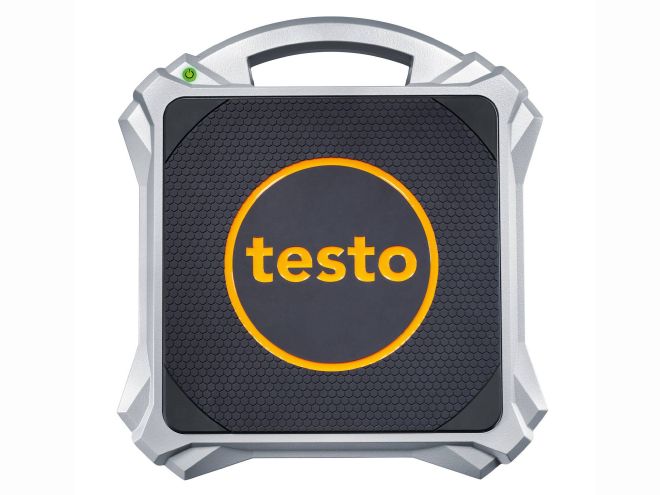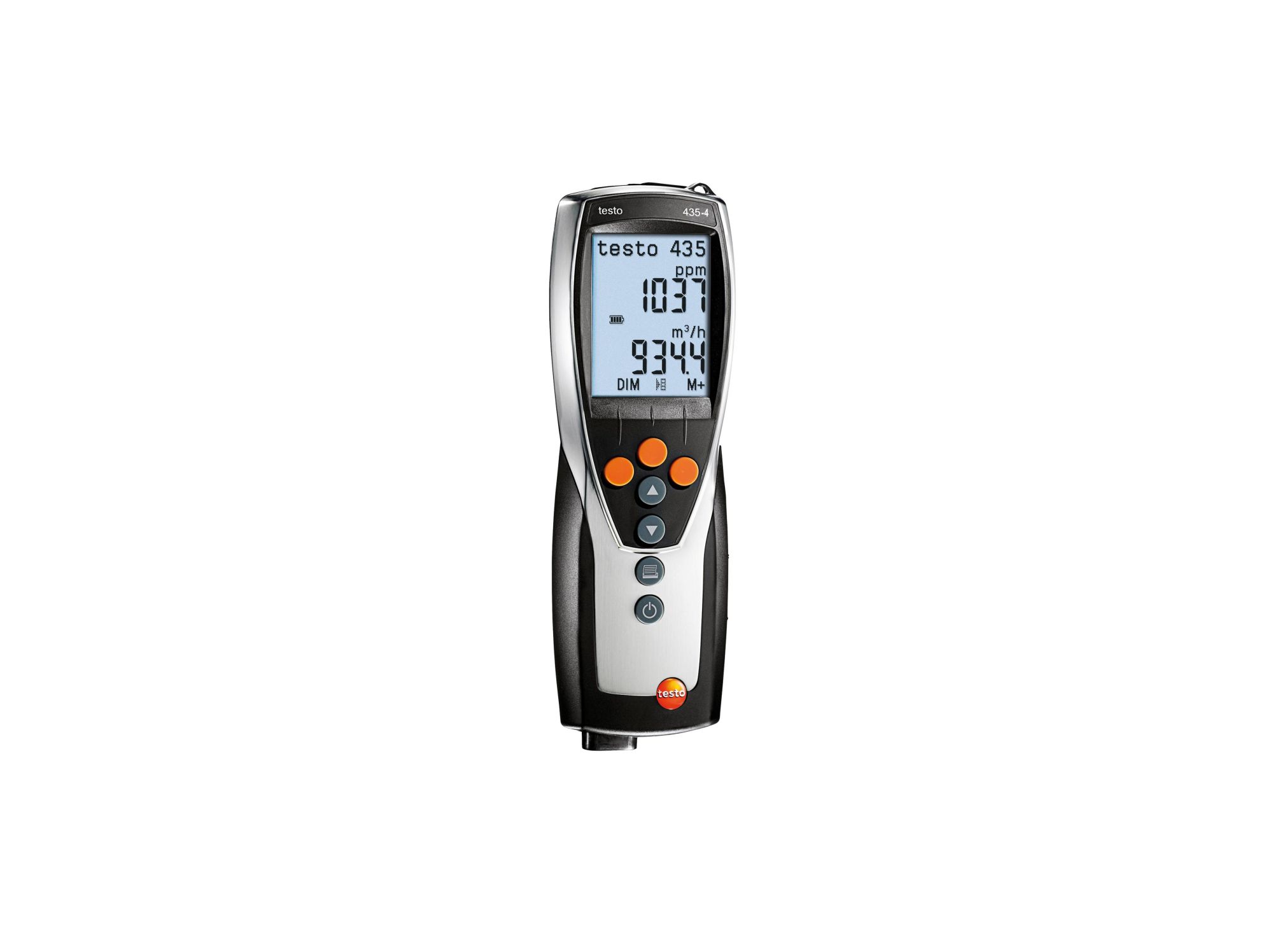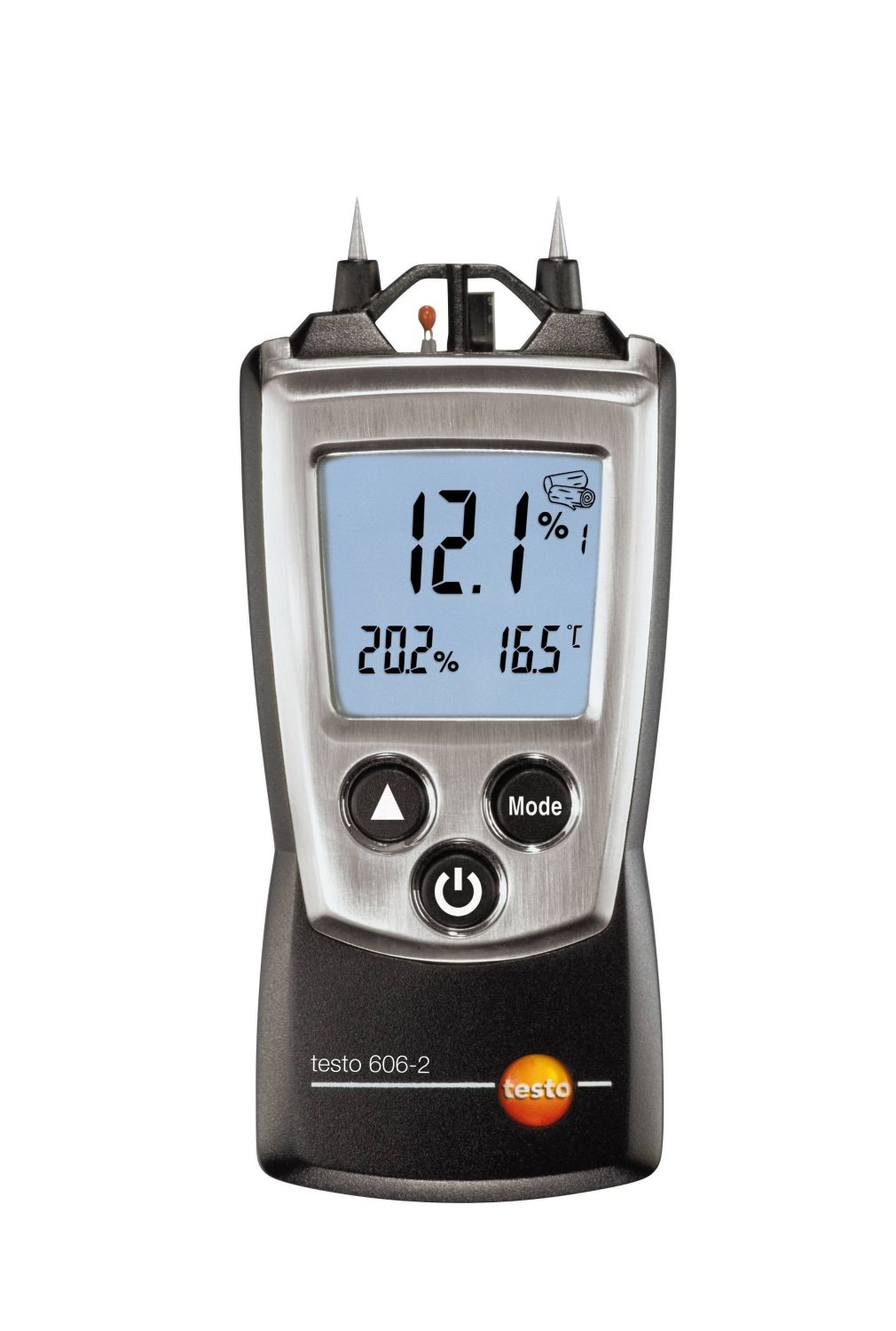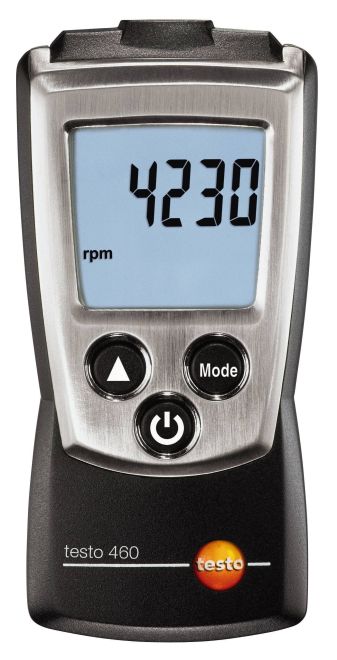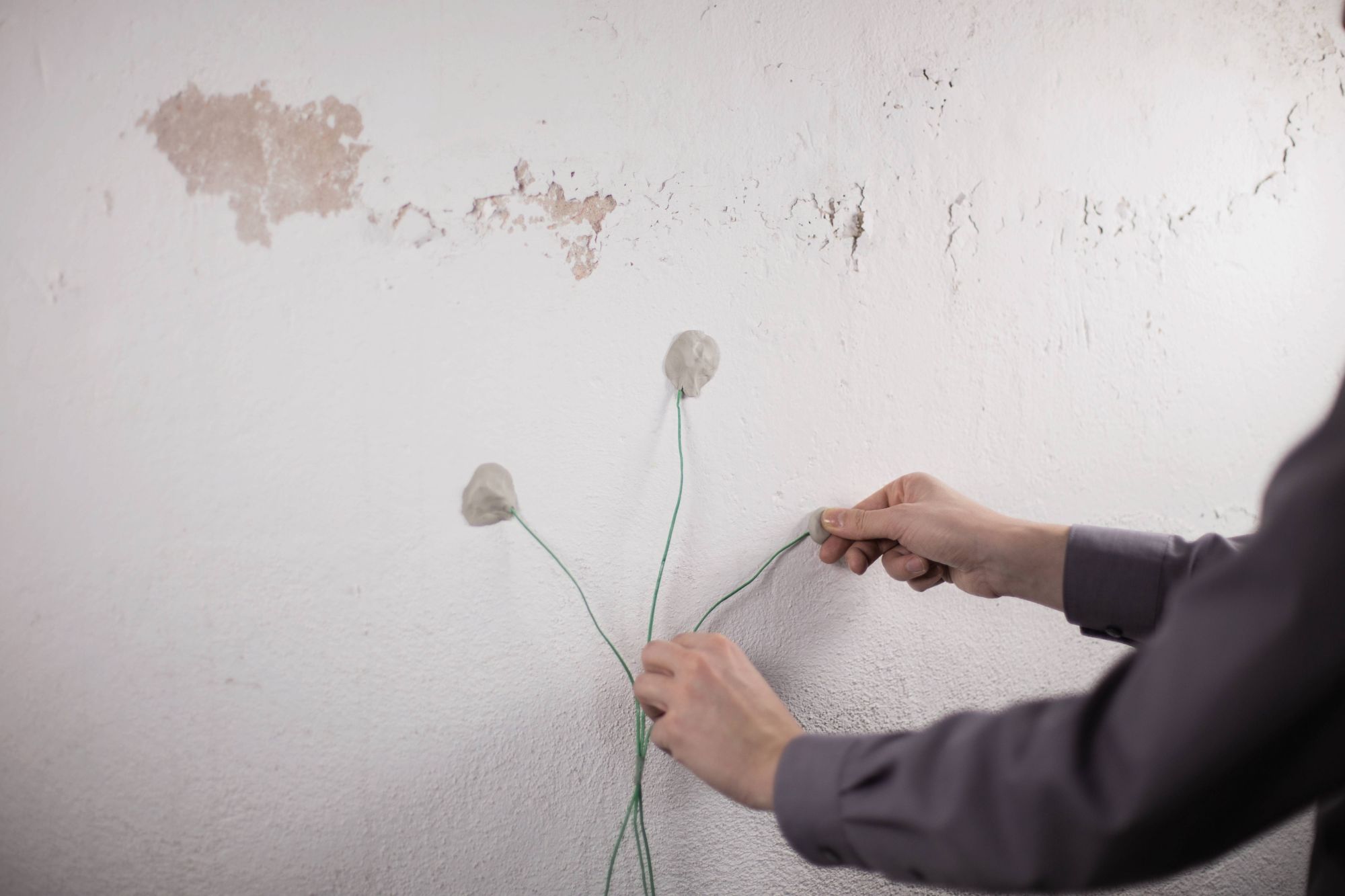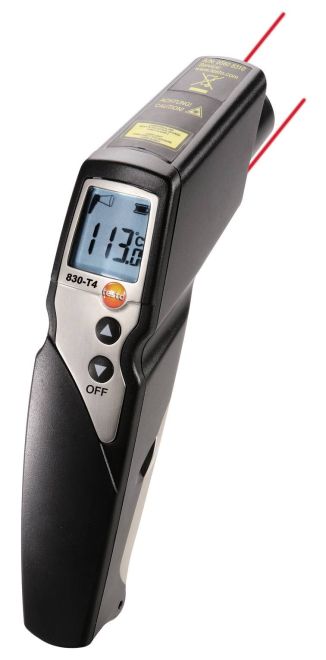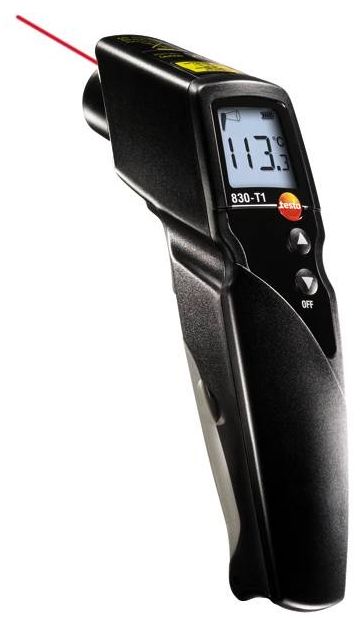Testo 435-2 - Indoor air quality meter
Special Price 90111
Regular Price: 99121.00
Overview
The testo 435-2 indoor air quality meter allows you to carry out all the measurements that are necessary to check and adjust ventilation and air conditioning systems and assess the indoor air quality. The IAQ meter also offers a wide range of probes and sensors to equip you to measure various parameters.
This meter uses a sensor to start up.
- Comprehensive range of measuring functions using optional accessories – e.g. anemometers, moisture sensors, lux and degree of turbulence sensors
- Super-size memory for up to 10,000 readings
- Displays dew point difference, min, max and mean values
- PC software for analyzing and logging measuring data
Product Description
The testo 435-2 indoor air quality meter is designed to allow you to carry out all the measurements that are necessary to check and adjust ventilation and air conditioning systems and assess the indoor air quality.
A wide selection of optional probes and sensors with the IAQ meter gives you the freedom to configure your meter just the way you want it. Order your probes and sensors along with your meter now.
Connectable sensors (optional) for Indoor Air Quality testing
- IAQ sensor for assessing the indoor air quality using CO2, air temperature, relative humidity and absolute pressure measurements
- Comfort sensor for degree of turbulence measurements in compliance with EN 13779 for the objective assessment of the air velocity in the relevant room
- Globe thermometer for measuring radiation heat
- Lux sensor for measuring illumination
- Moisture/temperature sensor for assessing the thermal comfort in the relevant room
- CO environmental sensor for measuring CO in rooms and buildings
- Temperature sensor for immersion, penetration, air and surface measurements
- Temperature sensors to determine the HTC value
Connectable sensors (optional) for checking and adjusting ventilation and air conditioning systems
- Thermal anemometer, also with integrated temperature and relative humidity measurement function for air velocity and volume flow rate measurements in ventilation ducts
- Impeller anemometer with small diameter(Ø 16mm) for air flow and volume flow rate measurements in ventilation ducts
- Impeller anemometer with large diameter (Ø 100mm) for air flow and volume flow rate measurements at air outlets in connection with the testovent 417 funnels also for carrying out measurements at disk valves and ventilation grilles or for carrying out measurements at ceiling diffusers using a volume flow rate rectifier
- Temperature sensor for immersion, penetration, air and surface measurements
- Moisture/temperature sensor for carrying out measurements in ventilation ducts
- Absolute pressure sensor
In addition to the other connectable sensors, you can also connect as many as three wireless sensors to your testo 435-2 IAQ meter: the optionally available wireless module allows you to carry out wireless temperature and moisture measurements via wireless sensors across distances of up to 20 meters out in the open. This helps to ensure that the cable is not damaged and that nothing gets in your way while measuring.
There is also a separate carry case available that provides you with plenty of room for both your meter and your selection of probes and sensors.
Complex technology that could hardly be more simple
The beauty behind testo 435-2 indoor air quality meter is that the whole measuring process can be carried out quickly and efficiently without any complex programming.
Sensor dependent menus and selectable user profiles for typical applications like “duct measurements” and “IAQ measurements” ensure that the meter is always ready to use.The testo 435-2 has a super-size memory that can save up to 10,000 measurements, which can be transferred to your laptop or PC via the included USB cable. The included software allows you to log, archive and clearly structure all relevant measuring data and measuring programmes, for example duct measurements. Specially adapted measurement protocols can be used to present your customers with data from duct, long-term and degree of turbulence measurements. The optionally available testo fast printer can be used toprovide your customers withon-the-spot protocol print outs.
The testo 453-2 has a large, easy-to-read backlit display that shows the dew point difference along with other values including min, max and mean values. A durable protective cover protects the testo 435-2 indoor air quality meter reliably against impact.
Delivery Scope
testo 435-2 indoor air quality meter including measured value memory, PC software, USB cable, calibration protocol,batteries.
| Temperature - NTC | |
|---|---|
| Measuring range | -50 to +150 °C |
| Accuracy | ±0.2 °C (-25 to +74.9 °C) ±0.4 °C (-50 to -25.1 °C) ±0.4 °C (+75 to +99.9 °C) ±0.5 % of mv (Remaining Range) |
| Resolution | 0.1 °C |
| Temperature - TC Type K (NiCr-Ni) | |
|---|---|
| Measuring range | -200 to +1370 °C |
| Accuracy | ±0.3 °C (-60 to +60 °C) ±(0.2 °C + 0.5 % of mv) (Remaining Range) |
| Resolution | 0.1 °C |
| Temperature - TC Type T (Cu-CuNi) | |
|---|---|
| Measuring range | -200 to +400 °C |
| Accuracy | ±0.3 °C (-60 to +60 °C) ±(0.2 °C + 0.5 % of mv) (Remaining Range) |
| Resolution | 0.1 °C |
| Humidity - Capacitive | |
|---|---|
| Measuring range | 0 to +100 %RH |
| Accuracy | See probe data |
| Absolute Pressure | |
|---|---|
| Measuring range | 0 to +2000 hPa |
| Accuracy | See probe data |
| Resolution | 0.1 hPa |
| Velocity - Vane anemometer | |
|---|---|
| Measuring range | 0 to +60 m/s |
| Accuracy | See probe data |
| Resolution | 0.01 m/s (60 + 100 mm Vane) 0.1 m/s (16 mm Vane) |
| Velocity - Hot wire anemometer | |
|---|---|
| Measuring range | 0 to +20 m/s |
| Accuracy | See probe data |
| Resolution | 0.01 m/s |
| Light | |
|---|---|
| Measuring range | 0 to +100000 Lux |
| Accuracy | See probe data |
| Resolution | 1 Lux 0.1 Hz |
| General technical data | |
|---|---|
| Dimensions | 220 x 74 x 46 mm |
| Operating temperature | -20 to +50 °C |
| Housing | ABS / TPE / Metal |
| Protection class | IP54 |
| Warranty | 2 years |
| Battery type | Alkali manganese, mignon, type AA |
| Battery life | 200 h (typical vane measurement) |
| Display ligthing | Illuminated display |
| Storage temperature | -30 to +70 °C |
| Weight | 428 g |
Flow measurement in the ventilation duct using a thermal anemometer and vane anemometer
Testo offers compact anemometer probes and pitot tubes for measuring the flow and volumetric flow in the ventilation duct.
Selecting a suitable probe or measuring instrument depends on the flow velocity in the ventilation duct. This can be broken down into three sub-ranges:
- Low flow velocities: 0 to 5 m/s => thermal anemometers and thermal probes are suitable for this (order no. 0635 1535, 0635 1025)
- Medium flow velocities: 5 to 40 m/s => best results are achieved by the 16 mm vane anemometer und Flügelrad-Sonden (order no. 0635 9535)
- High flow velocities: 40 70 100 m/s => the pitot tube provides the best prerequisites (see following application)
The flow sensors for duct measurement are all equipped with telescopes making them easy to use in large air ducts. Air temperature and humidity can also be measured with the same probe as the flow velocity if required. According to the required application, choose between a thermal probe, vane probe or pitot tube for measuring the flow measurement in the duct.
Measurement at the air outlet
Every duct inlet and outlet should only contain the volumetric flow that according to calculations is a basic prerequisite to an efficient functional system.
Large vane anemometers with 100 mm diameters are suitable for measuring the volumetric flows at duct outlets (order no. 0635 9435), as it integrates the flow velocity over a larger area thereby determining disturbance from the air grille (loop method).
To measure the suction or blowing vents of air grilles and poppet valves our volumetric flow rate funnel set is ideal (order no. 0563 4170) as is the large 100 mm vane anemometer (order no. 0635 9435) The entire volumetric flow is recorded with the aid of the funnel without the need for conversion on the basis of the flow velocity and area. This method of flow measurement is simple and reliable.
Measurement of the air and surface temperature
For human beings to be comfortable and perform at their best, it is crucial that the rooms they occupy are correctly air conditioned. As well as the structural conditions and personal perception, the following factors also contribute significantly to the existence of a pleasant indoor climate: the indoor air and surface temperature of walls, windows, floors and ceilings.
There is a range of optional temperature probes available for the testo 435. Our temperature probes with a sprung cross-band sensor element for measurement on surfaces are outstanding. The sprung cross-band sensor element fits on any surface, taking the actual temperature of the measured object in just a few seconds (for example the fast-reaction surface probe, order no. 0602 0393).
In order to allow a fast measurement of air temperature, the temperature sensor is free in our air probes (e.g. precise, robust NTC probe 0613 1712). Immersion/penetration probes can also be used for measurements in air. However, the response time is then about 40 to 60 times higher than the indicated value which was measured in water.
Measurement of radiated heat
The multi-functional measuring instrument testo 435 is your reliable aid to measuring thermal comfort. The optional, attachable globe thermometer (order no. 0602 0743) enables measurement of radiated heat (that is, the operative or perceived temperature). The operative temperature measured with a Globe thermometer with a 150 mm diameter preferably corresponds with people's perceived temperature to ± 0.41 K.
The temperature measurements in a room (air temperature and operative temperature) are to be taken in the same place and same general conditions as the measurement of indoor air velocities.
Lighting measurement
Suitable lighting in the workplace provides workers with sufficient light to be able to perform their jobs well. It helps to prevent mistakes being made, premature tiredness setting in, and maintains alertness.
testo 435-2 and the Lux probe (order no. 0635 0545) can be used to measure and assess luminous intensity (natural or artificial light).
Turbulence measurement
The air velocity in rooms directly affects thermal comfort. The turbulence and draught levels can be referred to in the assessment of comfort.
The level of turbulence indicates the air velocity fluctuation and intensity of air flow in a room.
The draught rate can be generally understood as the unwanted cooling of the body due to air movement. This is defined by the percentage of people who feel uncomfortable.
The non-directional comfort probe (order no. 0628 0109) has been specially designed to measure the turbulence level in accordance with EN 13779, and to assess the draught rate. In conjunction with our multi-functional measuring instrument testo 435, standard-compliant measurement results can be analyzed directly in the device.
U-value measurement
When redeveloping or renovating old buildings, it is crucial to be able to determine quickly if heat is being lost through the windows and walls. Only then can energy costs be reduced and redevelopment measures carried out efficiently.
When assessing thermal transmission, e.g. in old buildings in need of renovation, the U-value is one of the most important values. It enables thermal assessment, e.g. leaks or the smallest air flows at windows.
3 temperature values are required for calculating the U-value:
- Outside temperature
- Surface temperature of the internal wall
- Indoor air temperature
A radio probe is needed to determine the U-value (order number: 0614 1635); this is placed in position outside. It transmits the readings to the measuring instrument inside. To measure the surface temperature the three wires of the U-value probe are attached to the wall with plasticine. The air temperature is recorded by a sensor located on the probe plug. The measuring instrument testo 435-2 automatically calculates the U-value from the three values and shows this on the display. The advantage: there is no need for manual calculation; the result is quick and accurate.
In short, the testo 435-2 allows you to calculate the U-value quickly and accurately, as well as measure parameters for air conditioning, ventilation, and indoor air quality.
Measurement of indoor air quality (CO2)
Bad indoor air quality due to high concentrations of CO2 can cause tiredness, lack of concentration and even illness. Therefore, to ensure sufficient indoor air quality the CO2 concentration should generally not exceed 1 000 ppm. Values of 700 to 1 500 ppm can be viewed as the "reference range".
The IAQ probe (order no. 0632 1535) is particularly suitable for monitoring indoor air quality controls. This probe can be used to record CO2, temperature and relative humidity at the same time.
CO measurement
Carbon monoxide (CO) is an odourless, invisible and tasteless gas, but also poisonous. It is produced during the incomplete combustion of substances containing carbon, such as coal, wood, oil, natural gas, etc., in heat sources and combustion engines. The CO concentration will increase quickly, particularly if there is not enough oxygen available. This may have adverse effects on health.
The ambient CO probe (order no. 0632 1235) and testo 435-1 are able to detect even the smallest quantities of CO in ambient air.







